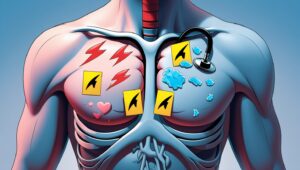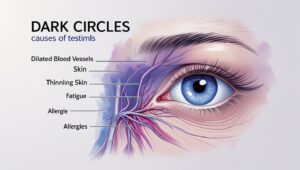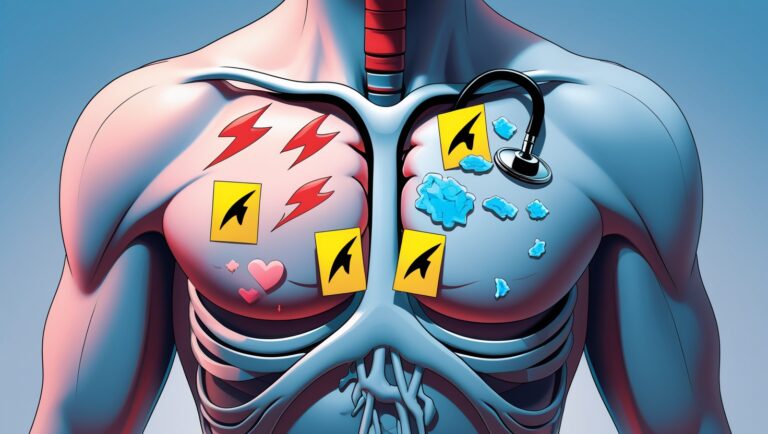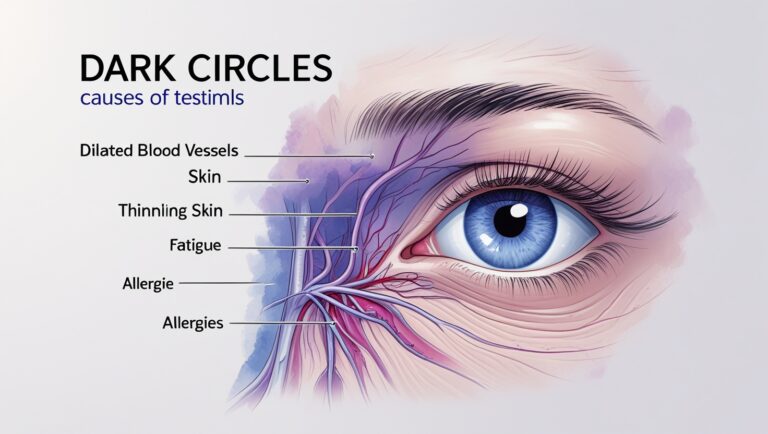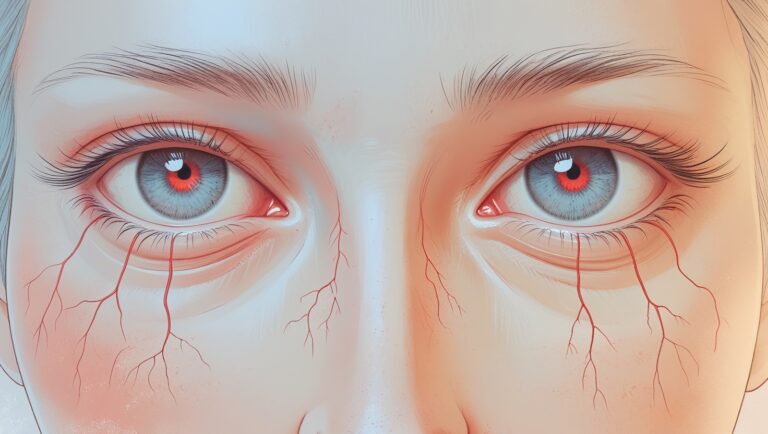In this article, we’ll explore the most common eye diseases, their causes, symptoms, and available treatments. Whether you’re experiencing vision problems or just want to maintain good eye health, this guide is for you.
Why Eye Health Matters
Our eyes are constantly exposed to light, screens, pollution, and allergens. As we age, our risk of eye conditions increases. Some diseases can develop slowly without noticeable symptoms until they reach an advanced stage. That’s why regular eye check-ups are crucial, especially if you have risk factors like diabetes, high blood pressure, or a family history of eye problems.
Top 10 Most Common Eye Diseases
Let’s take a closer look at the most frequently diagnosed eye diseases and vision problems.
1. Conjunctivitis (Pink or Red Eye)
Also known as acute conjunctivitis, this condition is an inflammation of the thin, transparent layer that covers the white part of your eyes and the inner side of the eyelids.
Causes:
-
Viral or bacterial infections
-
Allergies (pollen, dust mites, pet dander)
-
Chemical irritants (chlorine, smoke)
Symptoms:
-
Red or pink appearance of the eye
-
Itching or burning sensation
-
Watery or thick discharge
-
Swollen eyelids
Treatment:
Depends on the cause. Bacterial conjunctivitis may need antibiotic drops, while allergic conjunctivitis can be treated with antihistamines.
2. Cataracts
A cataract is the clouding of the eye’s natural lens, making it harder to see clearly.
Common in:
-
People over 50
-
Those with UV exposure, diabetes, or a history of eye injuries
Symptoms:
-
Blurred vision
-
Difficulty seeing at night
-
Seeing halos around lights
-
Faded colors
Treatment:
Cataract surgery is safe and highly effective, often restoring clear vision.
3. Dry Eye Syndrome
Dry eyes occur when your tear glands don’t produce enough tears or produce poor-quality tears.
Symptoms:
-
Stinging or burning sensation
-
Sensitivity to light
-
Redness
-
Blurred vision
Causes:
-
Age
-
Certain medications
-
Long screen time
-
Windy or dry environments
Treatment:
-
Artificial tears or prescription eye drops
-
Lifestyle changes (humidifiers, screen breaks)
4. Uveitis
Uveitis is inflammation of the middle layer of the eye, called the uvea. It can be acute, chronic, or recurrent.
Causes:
-
Autoimmune diseases (e.g., multiple sclerosis, sarcoidosis)
-
Infections (herpes, syphilis, tuberculosis)
-
Eye injuries or surgery
-
Reactions to medications
Symptoms:
-
Eye pain
-
Redness
-
Blurred vision
-
Light sensitivity
Treatment:
Prompt referral to an eye doctor (ophthalmologist) is essential. Treatment may include steroids and immunosuppressive drugs.
5. Diabetic Retinopathy
This serious eye disease occurs in people with Type 1 or Type 2 diabetes. Prolonged high blood sugar damages blood vessels in the retina.
Symptoms:
-
Spots or floaters
-
Blurred vision
-
Dark areas of vision
-
Vision loss
Treatment:
-
Blood sugar management
-
Laser therapy
-
Injections or surgery in severe cases
6. Keratoconus
In keratoconus, the normally round cornea becomes thin and cone-shaped, distorting vision.
Causes:
-
Genetic factors
-
Eye rubbing
-
Certain medical conditions
Symptoms:
-
Blurred or distorted vision
-
Increased sensitivity to light
-
Frequent prescription changes
Treatment:
-
Glasses or contact lenses
-
Corneal cross-linking
-
Cornea transplant (in advanced cases)
7. Age-Related Macular Degeneration (AMD)
One of the leading causes of blindness in older adults, AMD affects the macula, the central part of the retina responsible for sharp vision.
Types:
-
Dry AMD (more common)
-
Wet AMD (more severe)
Risk Factors:
-
Age
-
Smoking
-
Genetics
-
High blood pressure
Symptoms:
-
Blurry or dark areas in the center of vision
-
Difficulty recognizing faces
-
Straight lines appearing wavy
Treatment:
While there’s no cure, treatments like anti-VEGF injections and lifestyle changes can slow progression.
8. Myopia (Nearsightedness)
Myopia is a refractive error where close objects appear clear, but distant objects look blurry.
Causes:
-
Eyeball is too long
-
Cornea or lens shape issues
-
Family history
Symptoms:
-
Squinting
-
Headaches
-
Difficulty seeing distant signs or objects
Treatment:
-
Eyeglasses or contact lenses
-
Laser eye surgery
-
Orthokeratology (overnight lenses)
9. Glaucoma
Glaucoma damages the optic nerve due to increased intraocular pressure. It’s often called the “silent thief of sight” because it progresses without early symptoms.
Risk Factors:
-
Family history
-
Age over 60
-
Diabetes
-
Eye injuries
Symptoms (late stage):
-
Tunnel vision
-
Eye pain
-
Halos around lights
-
Nausea and vomiting (acute angle-closure)
Treatment:
-
Eye drops
-
Laser treatment
-
Surgery
Regular eye exams are key for early detection.
10. Presbyopia
Presbyopia is an age-related condition where the eye loses the ability to focus on close objects.
Symptoms:
-
Difficulty reading small print
-
Needing brighter light
-
Eye strain
Treatment:
-
Reading glasses
-
Bifocals or progressive lenses
-
Laser surgery or lens implants
Other Common Eye Conditions
Retinal Detachment
A medical emergency where the retina separates from its supportive tissue. Symptoms include:
-
Sudden floaters
-
Flashes of light
-
Shadow over vision
Eye Floaters
Common in people over 50. Most floaters are harmless, but sudden increases could indicate retinal detachment.
Warning Signs You Should Never Ignore
If you notice any of the following, seek immediate medical attention:
-
Sudden vision loss
-
Flashes of light
-
Increase in floaters
-
Severe eye pain
-
Eye injury
How to Maintain Eye Health
Protect your vision with these simple steps:
-
Get an eye exam every 1–2 years
-
Wear sunglasses with UV protection
-
Eat a diet rich in leafy greens and omega-3s
-
Manage chronic conditions like diabetes and hypertension
-
Limit screen time and take regular breaks
-
Avoid smoking
Conclusion: Don’t Wait Until It’s Too Late
Understanding what are the most common eye diseases is the first step toward preserving your vision for life. Many eye problems can be treated or slowed if caught early. If you’re experiencing symptoms or have a family history of eye diseases, don’t wait—schedule an appointment with an eye doctor today.
Your vision is precious. Take care of your eyes like you would your heart.
Call to Action:
Book your comprehensive eye exam today and take the first step toward better eye health. Early detection can prevent irreversible damage. Share this article with friends and family to raise awareness!
